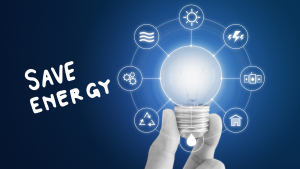
How to Reduce Energy Consumption on Earth Day—And Every Day
By: Doug Roberson
This year, Earth Day is focused on: acting (boldly), innovating (broadly), and implementing (equitably)—from businesses to governments to citizens. What is the solution that each one of these stakeholder groups can participate in? Managing, monitoring, and reducing energy consumption.
 It can feel overwhelming to take individual action when it comes to energy savings and our own impact on the planet. Knowing where to start is half the battle. Luckily, we now have tools and technology that allow us to have greater insight into our own energy usage. More importantly, we can now adjust our energy usage in accordance with those insights and positively impact the climate in the process.
It can feel overwhelming to take individual action when it comes to energy savings and our own impact on the planet. Knowing where to start is half the battle. Luckily, we now have tools and technology that allow us to have greater insight into our own energy usage. More importantly, we can now adjust our energy usage in accordance with those insights and positively impact the climate in the process.
The easiest way to start? Smart home automation devices. At an affordable price point, smart home devices can cut down monthly electric bills and reduce energy usage, thanks to their ability to measure power consumption and control lighting, appliances, and electrical outlets.
Here are some tips and strategies for using smart home automation to reduce your energy usage and costs—the perfect way to participate in Earth Day this year:
- Monitor energy consumption: Use energy monitoring features to track your power consumption in real-time. This will help you identify energy-hungry appliances and devices and make informed decisions about when and how to use them.
- Schedule devices around time of use rates: If your utility charges time of use rates, use automated scheduling features to turn off appliances during peak energy hours when electricity is the most expensive.
- Automate lighting control: Use a motion sensor to run lighting, ceiling fans, and personal electronics in a room only when people are present. This can help ensure that these circuits are only on when they’re needed, reducing unnecessary energy consumption.
- Use dimming features: Dimming lights to lower levels when full brightness is not needed cuts electrical consumption.
- Set “Away” or “Vacation” modes: Use smart home automation devices to create “Away” or “Vacation” modes that automatically turn off non-essential appliances and devices, reducing electrical use when you’re not at home.
- Pair renewables with load shedding: Turn off the least important circuits and extend the period of time before returning to grid power.
- Implement smart outlets: Use smart outlets to monitor and control the energy consumption of individual devices and appliances. This can help you figure out which of your devices are energy hogs—or vampires—and put strategies in place to adjust their usage.
While Earth Day is a global initiative, change begins in the everyday decisions we make in our families, homes, and businesses. In an era of skyrocketing energy costs and record consumption of resources, we can make small, yet innovative, changes. I believe smart home automation allows us to make those incremental changes, which over time will make a measurable and lasting impact on the health of our planet.
Doug Roberson is the chief operating officer at Allterco Robotics U.S., makers of the Shelly smart home products. Roberson is often tapped by the media as a home automation and IoT expert. Prior to joining Shelly, he developed Xeebot, a Wi-Fi-based home security system, and worked as a software engineer.







